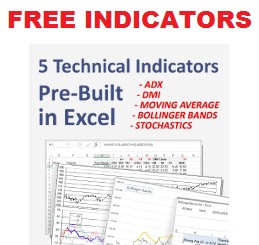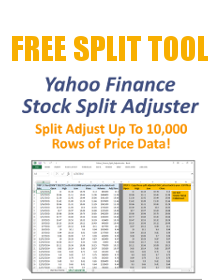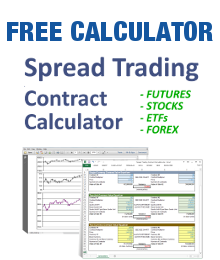Now, let’s assume you’ve made it this far. The beauty of Excel is that you never have to “hard code” your idea. You can experiment and throw out anything that doesn’t work without any cost other than your time. You will throw out lots of work along the way, but if you’re persistent (or start with a proven idea to begin with), you will eventually have a market-ready Excel trading model.
This is when the rubber hits the road. If you’ve done your hard work, you already know how your model is likely to behave under a range of market conditions, securities, data and Internet connection failures, and many other things that you probably never anticipated. All you do is turn your model on, execute trades, and monitor your results the same way you did in the walk-forward demo period above, but the trades are real.
The biggest risk at this point is overriding your model. Everybody does it. It’s human nature to discount the past and believe you see something new, something you haven’t tested, something you think you can do better than the dumb rules you coded. But you’re wrong. By overriding the trading signals, you are conpletely invalidating all the hard work and thought that went into developing the model in the first place. Many great sysem developers have this problem — they’re great researchers, designers, testers, and engineers, but lousy traders. They override their models frequently. The trade statistics come out wrong (and usually much worse).
The ONLY WAY to ensure you follow your model is to follow an established process and take EVERY trade the model dictates EXACTLY WHEN the model tells you to. We are not just speaking about “hybrid” models that require you (the trader) to execute trades. You would be amazed how many people turn their “fully automated rule-based trading robots” on and off depending on how they feel about the market that day. Until you get really good at this game, just follow your model. Better yet, just follow your model. If you’ve done all the steps above correctly, then it’s already well-tested, documented, and valid.
Using the same tools above that you used in the testing process is the key to ensure you have the discipline to trust and follow your model. However, to be sure, you should develop a rigorous process of analyzing the results. Further, you should size your trades small so you can stay with the model even through inevitable down periods in the equity curve. In addition, you will probably benefit from keeping a daily trading diary, just like a manual trader does. Remember, your human tendencies will appear when you least expect them, and the only way to run your Excel trading model profitably is to never forget that you are still a trader, and you can lose money.





